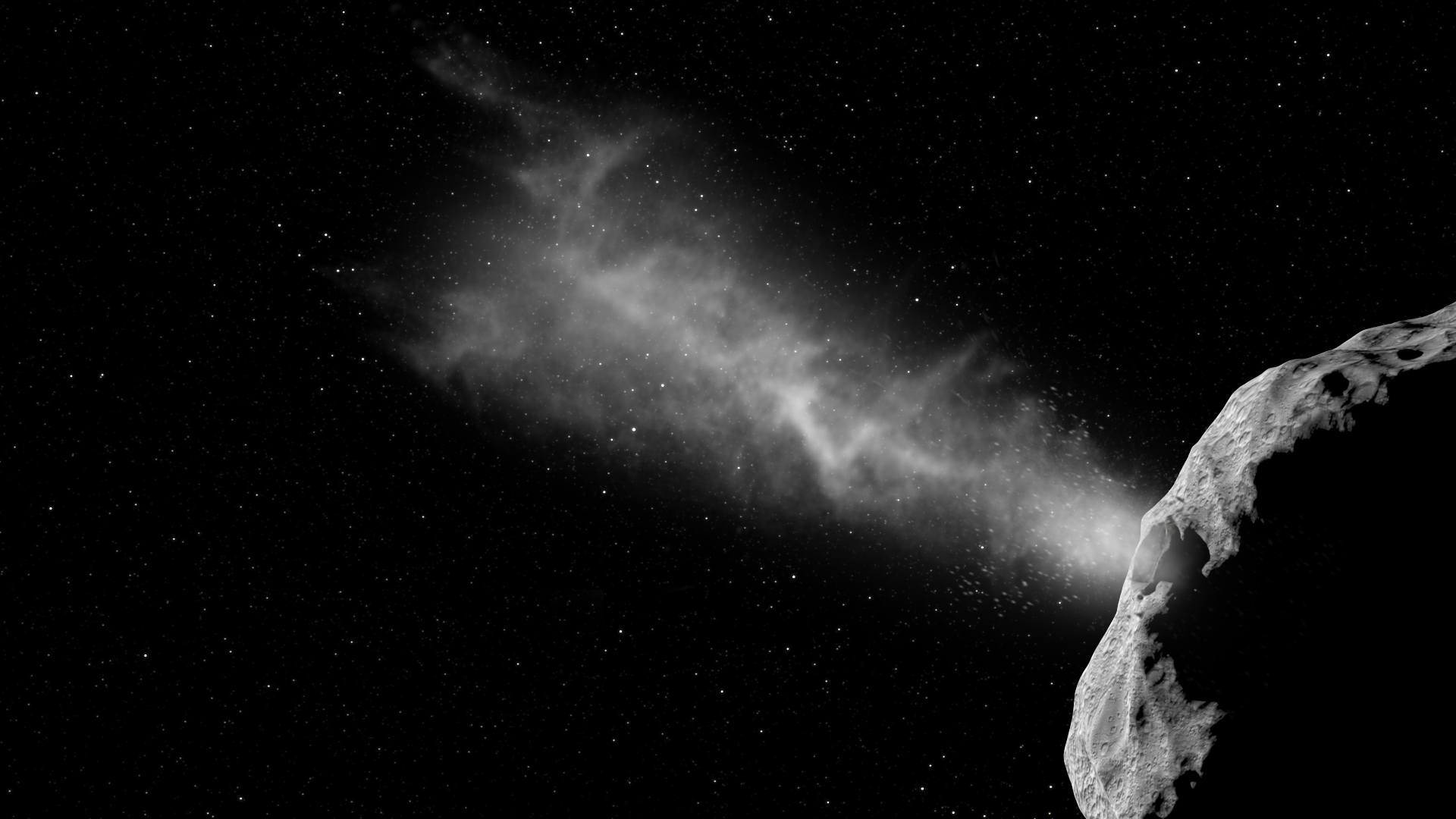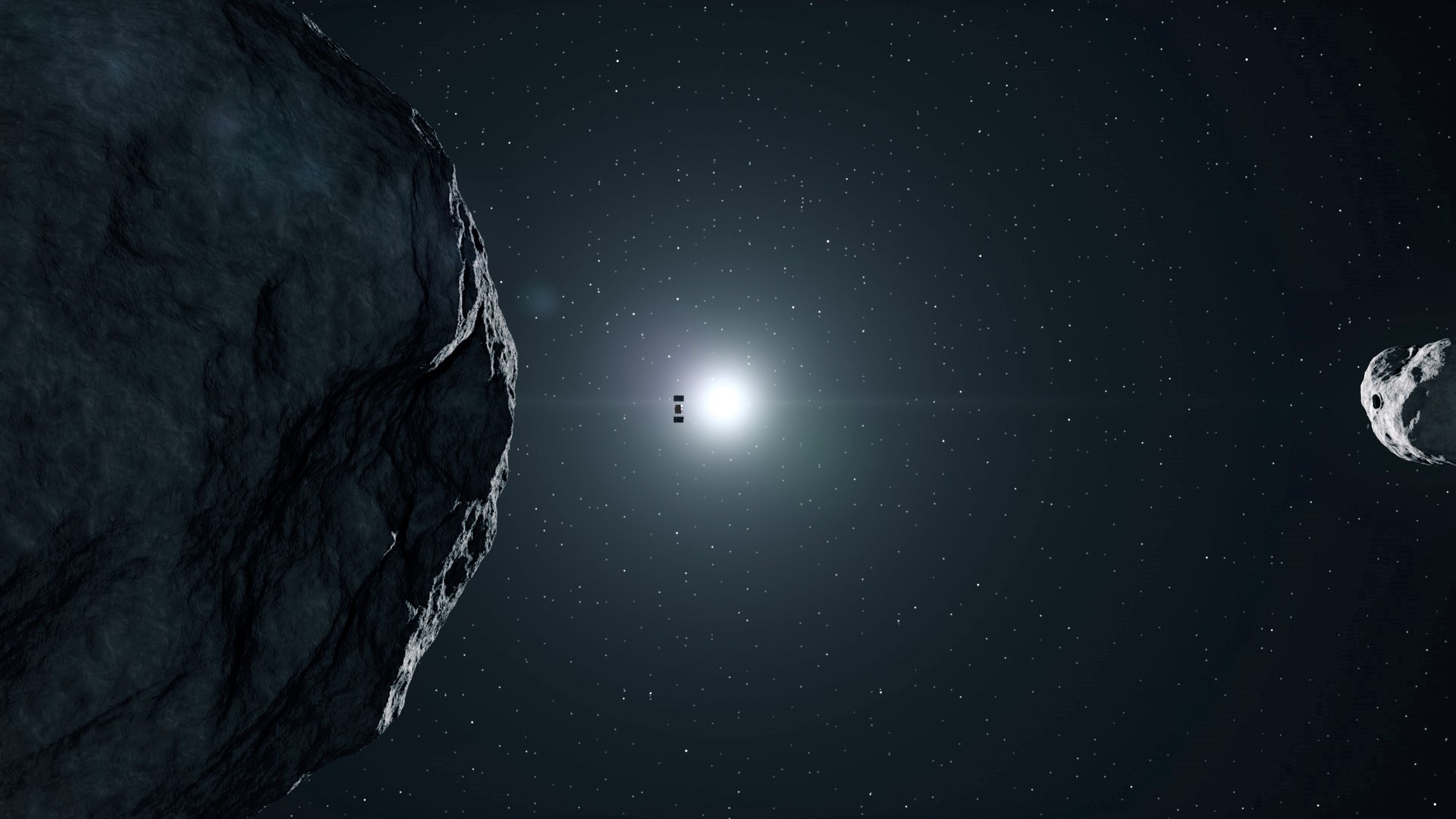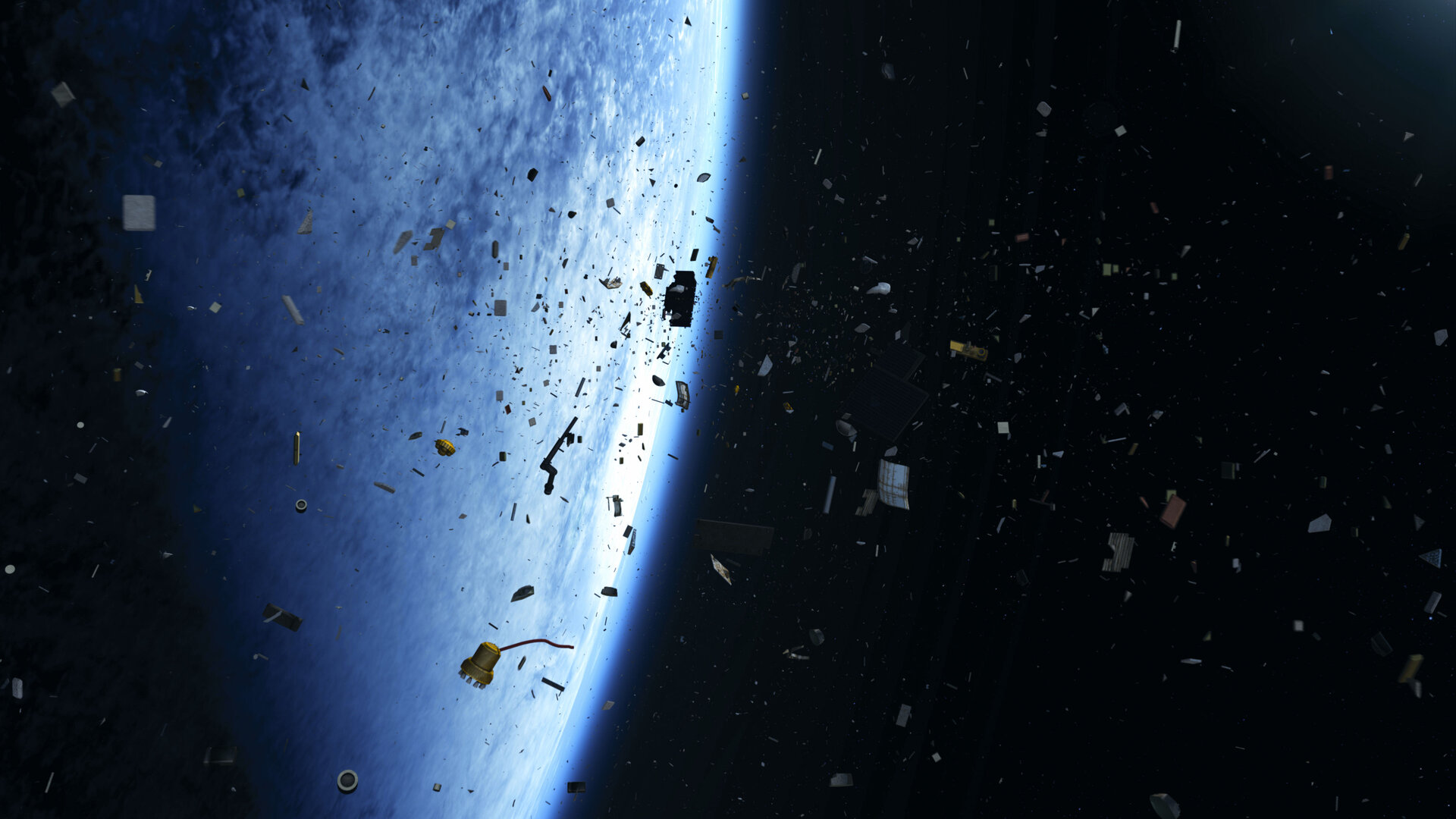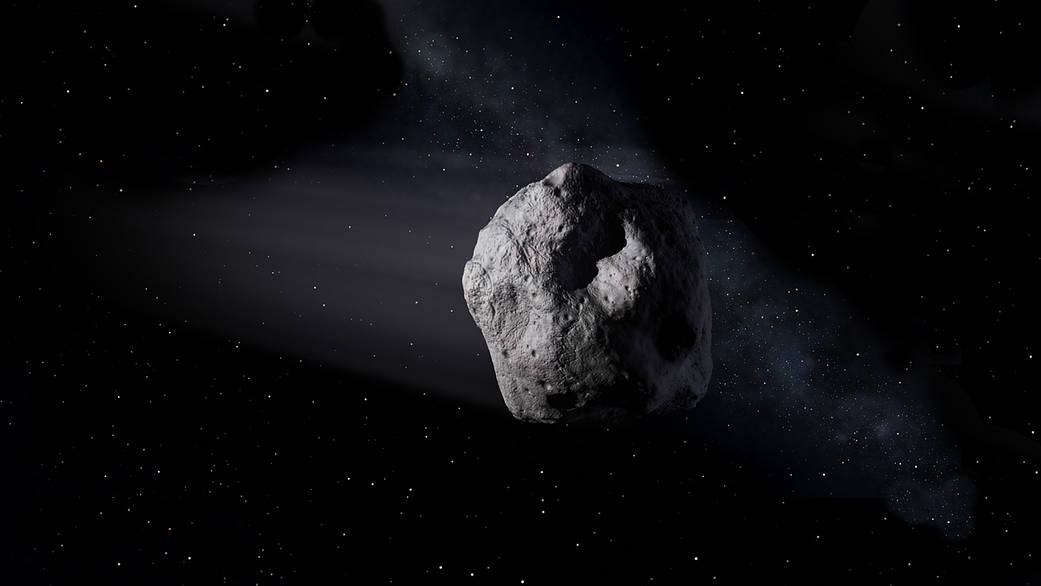Well over 1 million asteroids have already been discovered in our solar system. A good 1,400 of them are on the European Space Agency's (ESA) risk list due to their trajectory and size and are under special observation. However, ESA and other space agencies are not only observing these asteroids: they are also working on possible models and missions that could prevent serious or even fatal asteroid impacts on Earth in the future.
Compared to the increasingly visible consequences of environmental destruction, the extinction of species and climate change, the threat to humanity from asteroid impacts seems literally far away. However, events such as the Tunguska explosion on 30 June 1908 and the impact of the Chelyabinsk asteroid on 15 February 2013 show that the danger should not be underestimated.
The cause of the Tunguska explosion was most likely the entry of a 30 to 40 metre large asteroid into the Earth's atmosphere. The asteroid exploded about five to fourteen kilometres above the ground, causing a shock wave that uprooted trees over an area of more than 2,000 square kilometres in what is now the Krasnoyarsk region of northern Siberia and smashed windows and doors in the trading settlement of Wanawara, 65 kilometres away. Eyewitnesses could still observe a rising dust fountain in Kirensk, 450 kilometres away. However, no impact crater has been found to date. For this reason, it is assumed that the asteroid broke into many small pieces before the impact. Despite an explosive force comparable to several megatons of TNT, the damage caused in the sparsely populated area was still comparatively minor.
In contrast, almost 1,500 people were injured in the impact of the Chelyabinsk asteroid. This asteroid also broke apart while still in the air, causing a shock wave that damaged numerous buildings around the city of Chelyabinsk in the Russian Urals. A little over six months after the impact, a fragment of the asteroid weighing more than 570 kilograms was recovered from Lake Chebarkul, 80 kilometres southwest of Chelyabinsk. Experts estimate the diameter of the entire asteroid at about 17 to 20 metres.
Could the 1908 and 2013 impacts have been predicted?
The 1908 impact could not have been predicted, whereas prediction would have been theoretically possible for the 2013 impact. Until 1890, asteroids could only be found by comparing telescopic observations with existing celestial maps. Due to the relatively low light sensitivity of the human eye, however, this approach only allowed the discovery of very bright asteroids. It was not until the advent of photography that it became possible to detect faint objects by using particularly light-sensitive emulsions with long exposure times and tracking the object with the telescope. This led to a rapid increase in the number of known asteroids.
Since the 1990s, the search for asteroids has been conducted using automated search programmes. This systematic scanning of the sky has led to new asteroids being discovered almost daily today. The Chelyabinsk asteroid nevertheless remained undetected until its impact. This was due to its comparatively small size and its approach from the direction of the Sun.
What are the options for protecting Earth from asteroids?
The well-filled risk lists of the space agencies and the recurring reports of close flybys show that it is only a matter of time before the next larger asteroid comes dangerously close to Earth on its orbit through our solar system or even hits it. Of course, discovering the object in time is only half the battle in such a case. The other half is the application of civil protection measures and the development of suitable defence methods.
One defence method that ESA and NASA are currently working on together is the deflection of an asteroid with a so-called kinetic impactor, i.e. a special space probe. The project is called AIDA (Asteroid Impact and Deflection Assessment).
The AIDA mission: DART and AIM
The first concept study for the AIDA mission was presented back in February 2015. The mission concept at that time envisaged a mission with two space probes: the impact probe DART (Double Asteroid Redirection Test) designed by NASA and the observation probe AIM (Asteroid Impact Mission). The latter was to be contributed by ESA. The near-Earth double asteroid Didymos was selected as the test object. Didymos consists of a main body with a diameter of about 800 metres and a smaller body with a diameter of just under 170 metres, which orbits the main body at a distance of about one kilometre and is called Dimorphos. The mission schedule called for DART to impact Dimorphos and for the effects to be documented and transmitted to Earth by AIM. However, at the ESA Ministerial Council Meeting in December 2016, no funds were approved for the mission, which amounted to ESA withdrawing from the project. NASA then decided to carry out the DART mission anyway. Observation of the impact and measurements of the orbit change were to be carried out by observatories on Earth.
Hera as successor to AIM
However, at the ESA Ministerial Council Meeting in November 2019, the concept for an alternative mission to AIM was approved by the ESA member states. The new probe is called Hera and will be realised by OHB as prime contractor. The project is subject to a very tight schedule, as Hera must launch as early as 2024 in order to arrive at the Didymos system at a time that allows sufficient radio contact with Earth. NASA's DART probe has already been on its way to the Didymos system since 24 November 2021 and will hit Dimorphos on 26 September at a speed of about 6.5 kilometres per second. The immediate consequences of the impact can only be observed from Earth. However, without knowing the exact dimensions of the resulting impact crater, the change in Dimorphos' orbit caused by the impact cannot be precisely determined.
This is where the Hera probe comes into play. It will arrive at the Didymos system in 2026 and conduct a detailed investigation of the impact site and the properties of Dimorphos. To do this, Hera will carry two mini-satellites, in addition to its own instruments, which will detach from the probe after arriving at the Didymos system and conduct experiments independently.
Only the data provided by Hera allow a comprehensive interpretation of DART's impact and thus an assessment of the basic effectiveness of using a kinetic impactor for asteroid defence. Thereby, the AIDA collaboration between ESA and NASA is helping to lay the foundation for a practically applicable planetary defence strategy. If the approaching celestial body is detected in time, events such as the Tunguska explosion or the impact of the Chelyabinsk asteroid can thus hopefully be prevented in the future.




